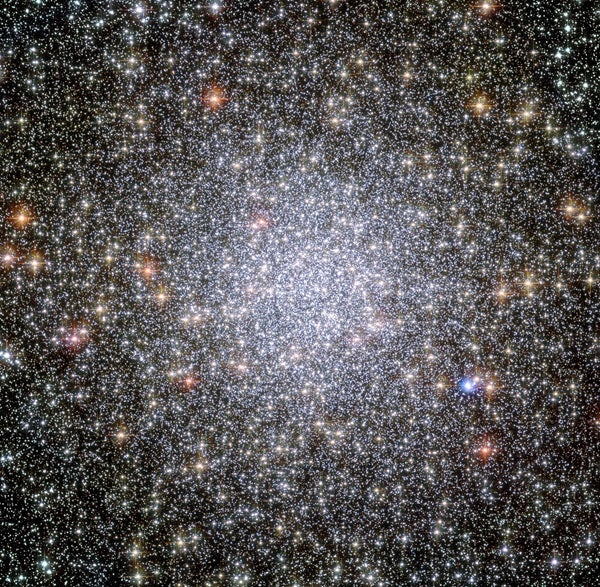The globular cluster 47 Tucanae was just recently in the news for showing evidence of an intermediate-mass black hole. Now, this bright southern cluster is once again making headlines for hosting the tightest white dwarf-black hole binary ever identified in our galaxy.
The binary itself isn’t news to astronomers, but the proximity of its constituents is. Previously thought to be a cataclysmic variable, which is a binary pair consisting of a white dwarf (the remnant of a Sun-like star) pulling matter off a younger star, radio observations published by Associate Professor James Miller-Jones of Curtin University and the International Centre for Radio Astronomy Research (ICRAR) in 2015 had hinted that the accreting star could be a black hole, while the donor star might be a white dwarf.
In a recent paper published in the Monthly Notices of the Royal Astronomical Society on March 14, first author Dr. Arash Bahramian from the University of Alberta in Canada and Michigan State University in the United States and his team offer a more detailed look at X9, the binary pair, using data from NASA’s Chandra X-ray Observatory and Nuclear Spectroscopic Telescope Array (NuSTAR), as well as Australia’s Commonwealth Scientific and Industrial Research Organisation’s Australia Telescope Compact Array.
Based on this new data, the team believes that X9 is a binary system containing a black hole that strips mass from a white dwarf as the latter orbits at a distance of just about 2.5 times the distance between Earth and the Moon. The white dwarf completes an orbit every 28 minutes, which is the likely cause of the periodic X-ray variability seen from the system.
Despite this amazingly close separation, the white dwarf itself should remain in orbit, rather than eventually fall into the black hole. However, this close-in dance has taken its toll; according to Miller-Jones, a co-author on the paper, “We think the star may have been losing gas to the black hole for tens of millions of years and by now has now lost the majority of its mass. Over time, we think that the star’s orbit will get wider and wider as even more mass is lost, eventually turning into an exotic object similar to the famous diamond planet discovered a few years ago.”
Binary star systems with periods less than about 60 minutes and in which mass is transferred from a companion to a neutron star or black hole are called ultra-compact X-ray binaries, or UCXBs for short. These are rare objects; if X9 is indeed a UCXB, it is the first such system identified in the Milky Way.
Vlad Tudor, a co-author from the ICRAR group at Curtin University, says another possible explanation for X9 could be a neutron star that’s spinning up, rotating ever faster as its mass is pulled into the black hole. But this alternate theory “doesn’t explain everything we’re seeing here, so our best current explanation is that we’re dealing with a white dwarf in extremely close proximity to a black hole,” he says.
X9’s extreme characteristics of course raise questions about how it came to be. Such a system could arise if a collision occurred between a black hole and a red giant star, causing the red giant to lose its outer layers and leaving a white dwarf-black hole binary system behind. Over time, the objects’ orbits would have shrunk as gravitational waves were emitted, resulting in the tight orbit and mass transfer observed today. While such gravitational waves aren’t currently detectable with today’s gravitational-wave observatories, future space-based experiments might offer the sensitivity required to spot them.










